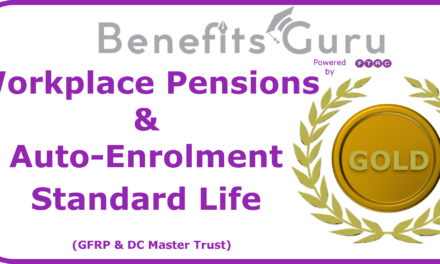Since the introduction of auto-enrolment in 2012, the workplace pension participation rate amongst private sector workers in the UK has more than doubled from 32% to 75% of workers in April 2021 according to the latest data from the Office for National Statistics (ONS).
The overall workplace pension participation rate, including public sector workers was 79%. This is a very slight rise from April 2020 when 78% workers were participating. The ONS said this could be explained by increased public sector employment driven by the government’s response to the Coronavirus pandemic.
The ONS said the overall trend in participation has stablised in recent years, following several years of strong growth after the phased introduction of auto-enrolment between 2012 and 2018. Overall participation rates were 47% in 2012.
In April 2021, the gap in employee workplace pension participation rates between the public (91%) and private sectors (75%) was among its lowest levels, mainly driven by increased participation in the private sector up from 32% in 2012. In comparison 83% of public sectors were already participating in a workplace pension scheme before the advent of auto-enrolment.
For employees with a workplace pension, the average value was £65,400 in the public sector compared with £10,300 in the private sector.
These latest figures could be used to demonstrate how auto-enrolment has been a triumph.
Participation rates were much higher for those employees eligible for autoenrollment.
Around 80% of eligible employees had a pension, compared with just 20% of workers between 16 and 21 who are ineligible for auto-enrolment.
Four in ten of those above State Pension age had a workplace pension.
Workplace pension participation was lowest for private sector full-time employees earning between £100 and £199 per week. Only 43% of these workers have a workplace pension in place. This may be because these employees are also ineligible under auto-enrolment as they fall beneath the earnings trigger.
In terms of work sectors, accommodation and food services had the lowest participation rate in April 2021 (51%) but saw one of the largest increases (46 percentage points) in any industry since the introduction of auto-enrolment April 2012.
Public administration and defence, an industry with high public sector employment, had the highest level of employee workplace pension participation prior to automatic enrolment (AE) in 2012 (91%). It remained among the highest in April 2021 (94%).
Other industries with high public sector employment, such as education, tended to have high levels of workplace pension participation in both periods.
In terms of worker age, in April 2021, the employee workplace pension participation rate was highest for the age group of those aged 40 to 49 years at 86%. Participation rates were similar in each age group between those aged 22 years to State Pension age. There was small growth (between 1 and 2 percentage points) in participation across all age groups since the previous year.
In each age group between those aged 22 years to SPA, the participation rate of public sector employees was around 10 percentage points higher than for private sector employees.
Across all working patterns, participation level by gender was almost equal (80% of men and 79% of women). Since April 2020, there was a slight increase in the participation rates for both men and women. This was primarily driven by increased participation among private sector part-time employees.
By working pattern, 87% of full-time employees were participating in a workplace pension versus 61% part-time employees.
Eastern Scotland (85%), Southern Scotland (84%) and Inner-London West (84%) had the highest pension participation rate. Whilst Outer London, East and North East within the London region, had the lowest at 71% in April 2021.
However, the ONS did admit there was a degree of uncertainty to this latest data set. The statistics period covers 21 April 2021, when roughly 3.7m employees were on furlough under the Coronavirus Job Retention Scheme. This compares to the previous year when approximately 8.8m employees were furloughed.
So, participation rates are rising, but is engagement? Benefits Guru is just in the process of gathering a new set of data (from participating pension providers) to look at a number of factors which could help measure member engagement. Ensure you are signed up the for latest insights to be the first to see when this is published.







